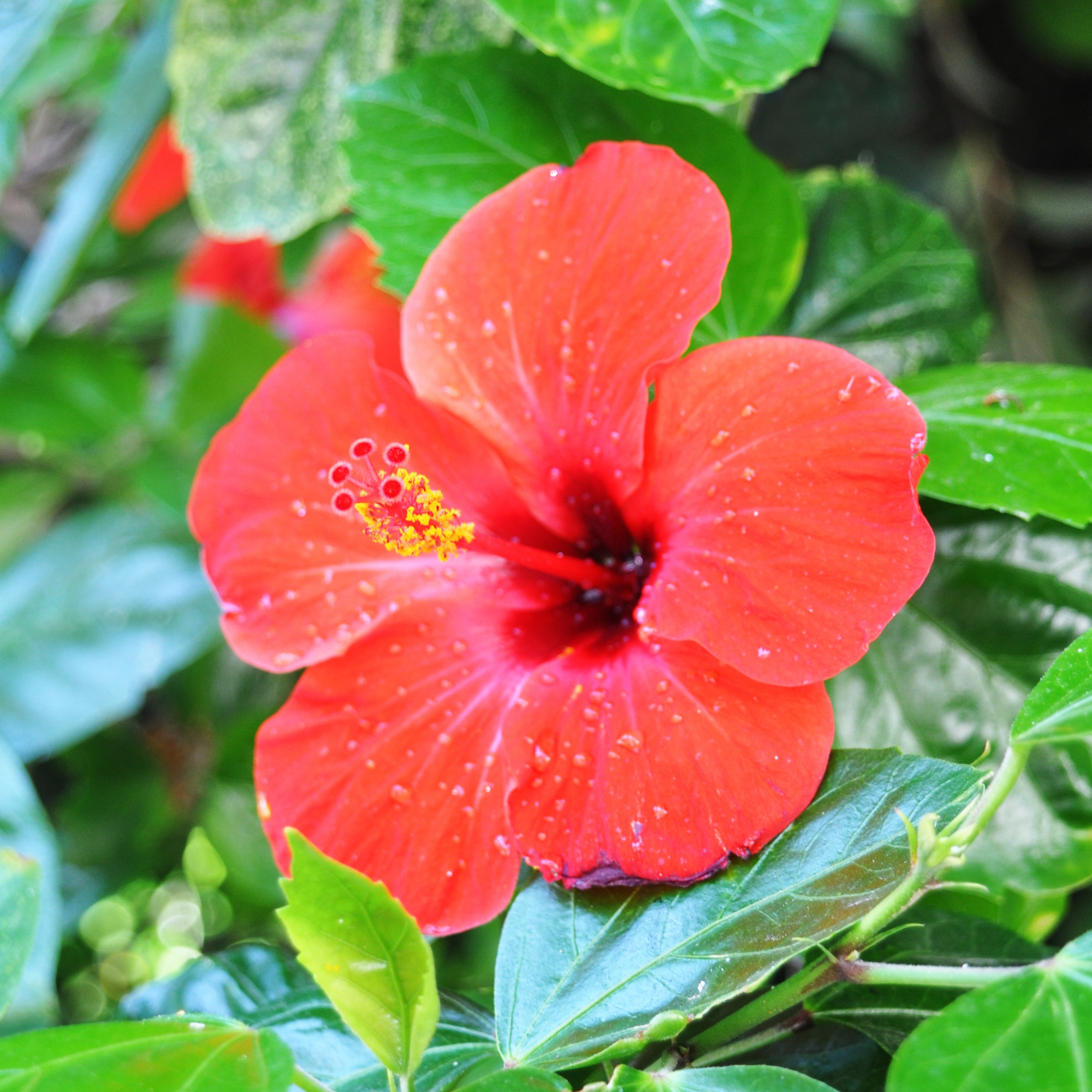The Allure of the Hibiscus: More Than Just a Pretty Flower
The hibiscus. Just the name probably conjures up images of tropical beaches, vibrant colors, and maybe even a refreshing iced tea. And you wouldn’t be wrong! These beauties are definitely eye-catching, but there’s so much more to them than just their good looks. Belonging to the Malvaceae family (that’s the same family as okra and cotton, believe it or not!), the hibiscus genus (Hibiscus) is vast and varied, boasting hundreds of different species that pop up all over the warmer regions of the globe.
A Global Traveler: Where Does Hibiscus Call Home?
From the steamy tropics to the more temperate zones, hibiscus plants have managed to set up shop in a wide range of climates. You’ll find them thriving in Asia, Africa, the Americas, and even parts of Europe. This adaptability is one of the reasons they’re so popular as garden plants worldwide. Some varieties are annuals, meaning they live for just one growing season, while others are perennials, happily returning year after year. Then you have the woody types that can grow into shrubs or even small trees – talk about versatile!

A Rainbow of Blooms: The Stunning Flowers
Let’s be honest, the flowers are a major draw when it comes to hibiscus. They come in an incredible array of colors – fiery reds, sunny yellows, soft pinks, pure whites, vibrant oranges, and even some captivating purples and blues. The size and shape of the blooms can also vary quite a bit, from delicate, small blossoms to impressive, dinner-plate-sized showstoppers. These flowers are often trumpet-shaped with a prominent central stamen, which is a key characteristic of the hibiscus.
Beyond Beauty: The Practical Side of Hibiscus
While their ornamental value is undeniable, hibiscus plants also have a surprising number of practical uses. In many cultures, the flowers are used to make delicious and refreshing beverages. Think of the tangy and vibrant red hibiscus tea, also known as bissap in West Africa or jamaica in Mexico. It’s not just tasty; it’s also packed with antioxidants.

But the uses don’t stop there! Different parts of the hibiscus plant have been used in traditional medicine for various ailments. The leaves, roots, and seeds have all found their place in folk remedies. Some species, like Hibiscus sabdariffa, are cultivated for their fleshy calyxes (the part surrounding the flower), which are used in jams, jellies, and even as a natural food coloring. And let’s not forget the fibers from some hibiscus species, like Hibiscus cannabinus (kenaf), which are used to make rope, paper, and textiles. Who knew these pretty plants were so industrious?
Growing Your Own Hibiscus: Tips for Success
Thinking of adding a hibiscus to your garden? Here are a few things to keep in mind. Most hibiscus varieties love sunshine, so pick a spot that gets at least six hours of direct sunlight each day. They also prefer well-draining soil that’s rich in organic matter. Regular watering is important, especially during hot and dry periods, but be careful not to overwater, as soggy soil can lead to root rot. Depending on the type of hibiscus you have, you might need to provide some protection during the colder months. Pruning can help to encourage bushier growth and more flowers. With a little care and attention, you’ll be rewarded with a profusion of those gorgeous blooms.
Conclusion: The Enduring Appeal of the Hibiscus

From its stunning flowers and global presence to its diverse practical applications, the hibiscus plant truly has a lot to offer. It’s a testament to the beauty and utility that can be found in the natural world. Whether you admire it for its ornamental charm, enjoy its refreshing tea, or appreciate its various other uses, the hibiscus continues to captivate and delight people around the world. It’s a plant with a rich history and a vibrant future, a true gem in the plant kingdom.
Frequently Asked Questions About Hibiscus
What’s the difference between tropical and hardy hibiscus?
Tropical hibiscus varieties are those that are typically grown in warmer climates and are more sensitive to cold temperatures. They often have glossy leaves and large, showy flowers. Hardy hibiscus, on the other hand, are more tolerant of colder temperatures and can survive winters in many temperate regions, often dying back to the ground in the fall and re-emerging in the spring.
Can I eat hibiscus flowers?
Yes, some hibiscus flowers are edible and are used in various culinary applications. The most common edible part is the calyx of Hibiscus sabdariffa, which is used to make tea, jams, and sauces. However, it’s important to ensure that the hibiscus you’re consuming hasn’t been treated with any pesticides or chemicals.
How often should I water my hibiscus plant?
The watering needs of a hibiscus plant can vary depending on factors like the climate, the type of hibiscus, and the soil. Generally, it’s best to water when the top inch of soil feels dry to the touch. During hot, dry periods, you might need to water more frequently. Ensure good drainage to prevent waterlogged soil.
Why isn’t my hibiscus blooming?
There could be several reasons why your hibiscus isn’t blooming. Common causes include insufficient sunlight (hibiscus needs at least 6 hours of direct sun), improper watering (either too much or too little), lack of nutrients in the soil, or improper pruning. Ensure your plant is getting enough light, water it appropriately, and consider using a balanced fertilizer during the growing season.
Are hibiscus plants attractive to pollinators?
Hibiscus Plant
